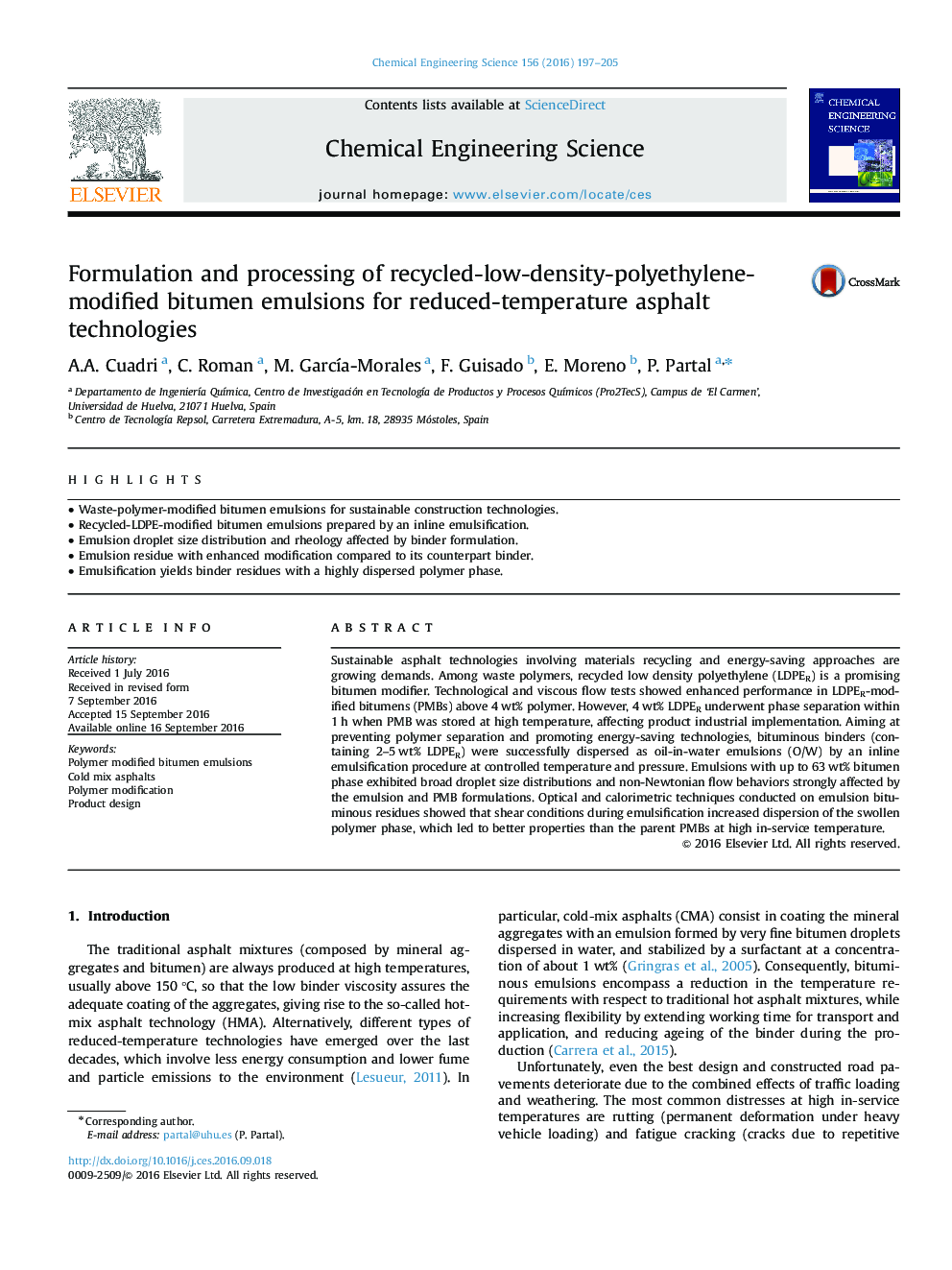| Article ID | Journal | Published Year | Pages | File Type |
|---|---|---|---|---|
| 6467797 | Chemical Engineering Science | 2016 | 9 Pages |
â¢Waste-polymer-modified bitumen emulsions for sustainable construction technologies.â¢Recycled-LDPE-modified bitumen emulsions prepared by an inline emulsification.â¢Emulsion droplet size distribution and rheology affected by binder formulation.â¢Emulsion residue with enhanced modification compared to its counterpart binder.â¢Emulsification yields binder residues with a highly dispersed polymer phase.
Sustainable asphalt technologies involving materials recycling and energy-saving approaches are growing demands. Among waste polymers, recycled low density polyethylene (LDPER) is a promising bitumen modifier. Technological and viscous flow tests showed enhanced performance in LDPER-modified bitumens (PMBs) above 4Â wt% polymer. However, 4Â wt% LDPER underwent phase separation within 1Â h when PMB was stored at high temperature, affecting product industrial implementation. Aiming at preventing polymer separation and promoting energy-saving technologies, bituminous binders (containing 2-5Â wt% LDPER) were successfully dispersed as oil-in-water emulsions (O/W) by an inline emulsification procedure at controlled temperature and pressure. Emulsions with up to 63Â wt% bitumen phase exhibited broad droplet size distributions and non-Newtonian flow behaviors strongly affected by the emulsion and PMB formulations. Optical and calorimetric techniques conducted on emulsion bituminous residues showed that shear conditions during emulsification increased dispersion of the swollen polymer phase, which led to better properties than the parent PMBs at high in-service temperature.
